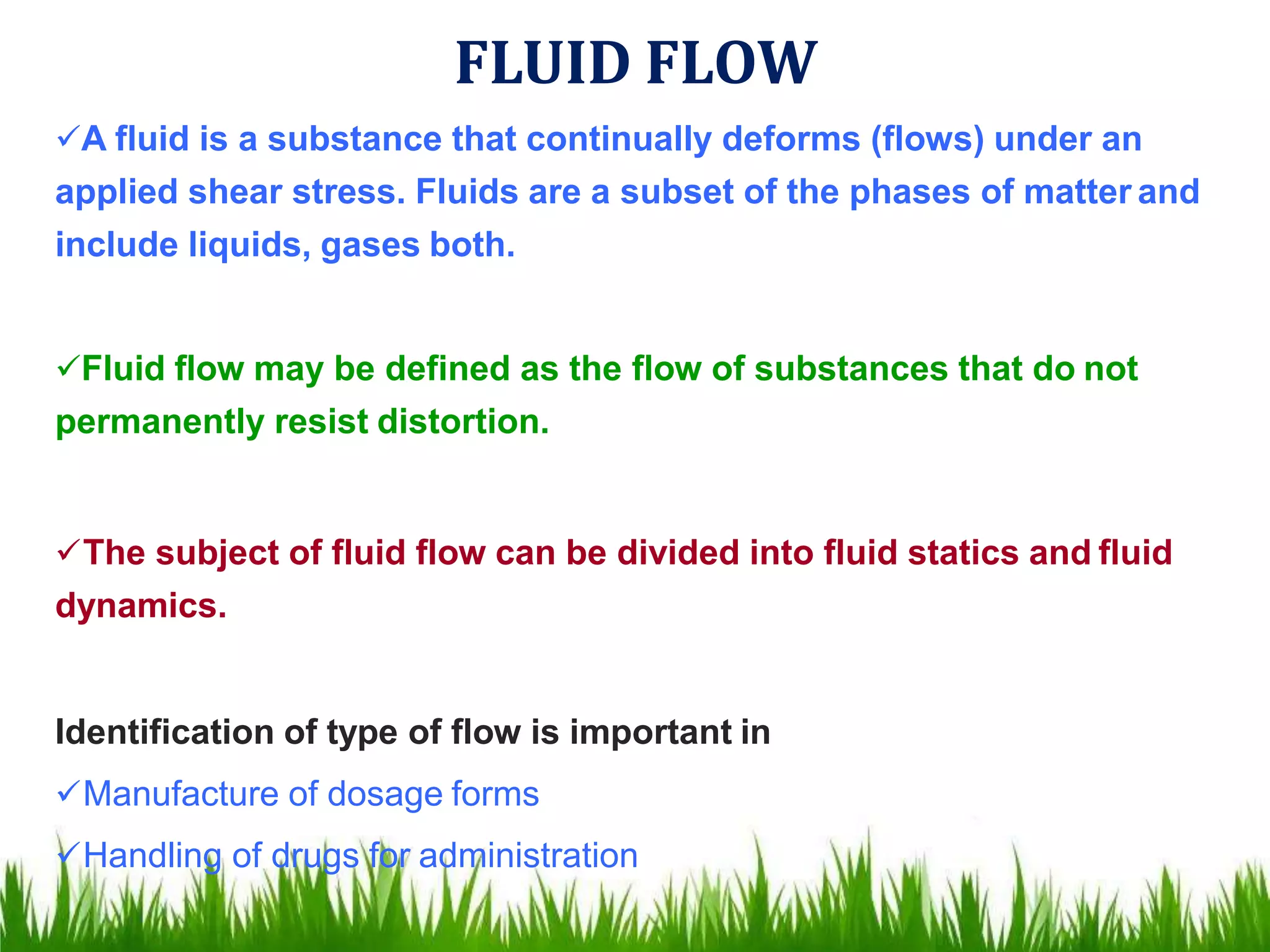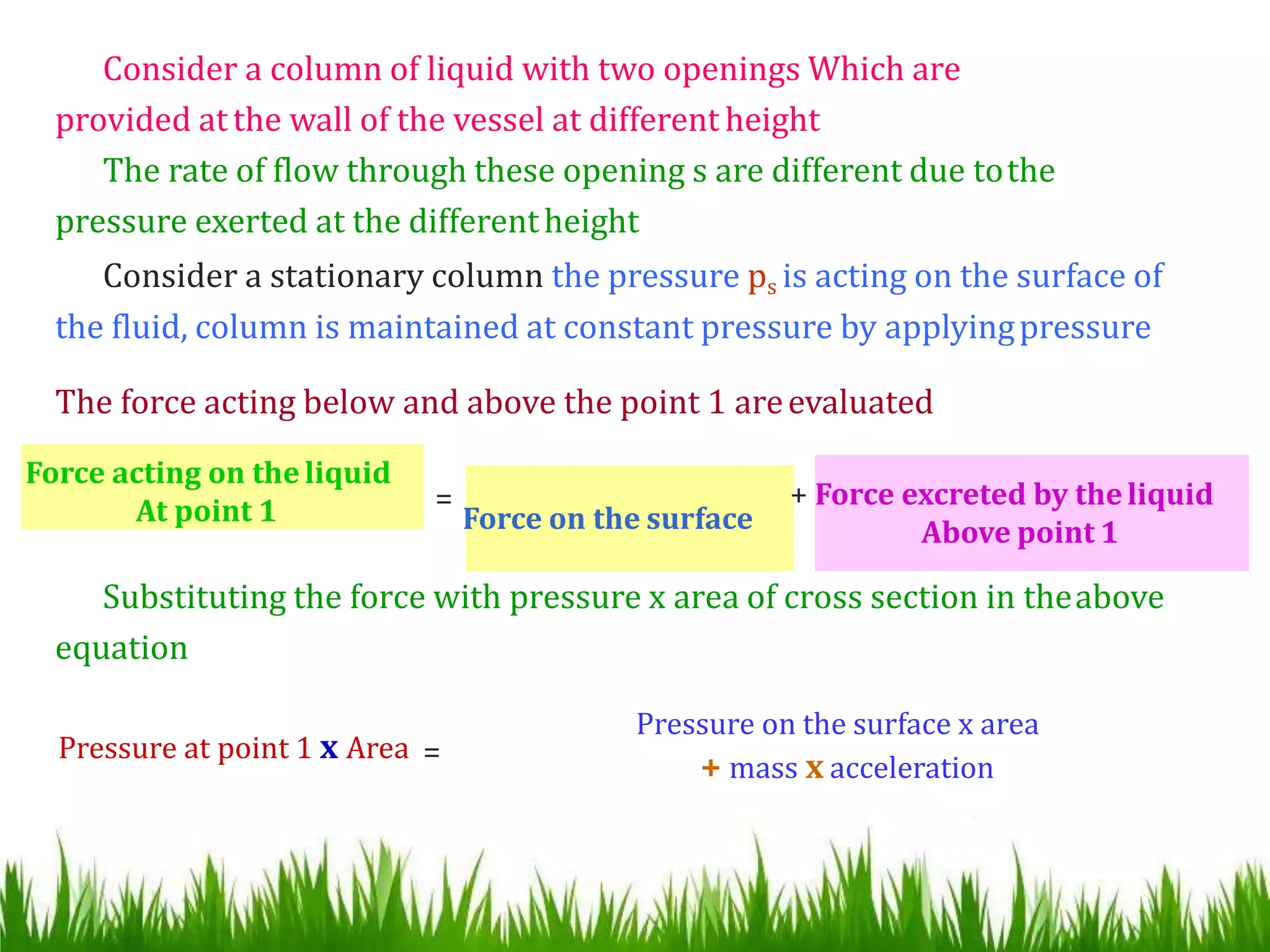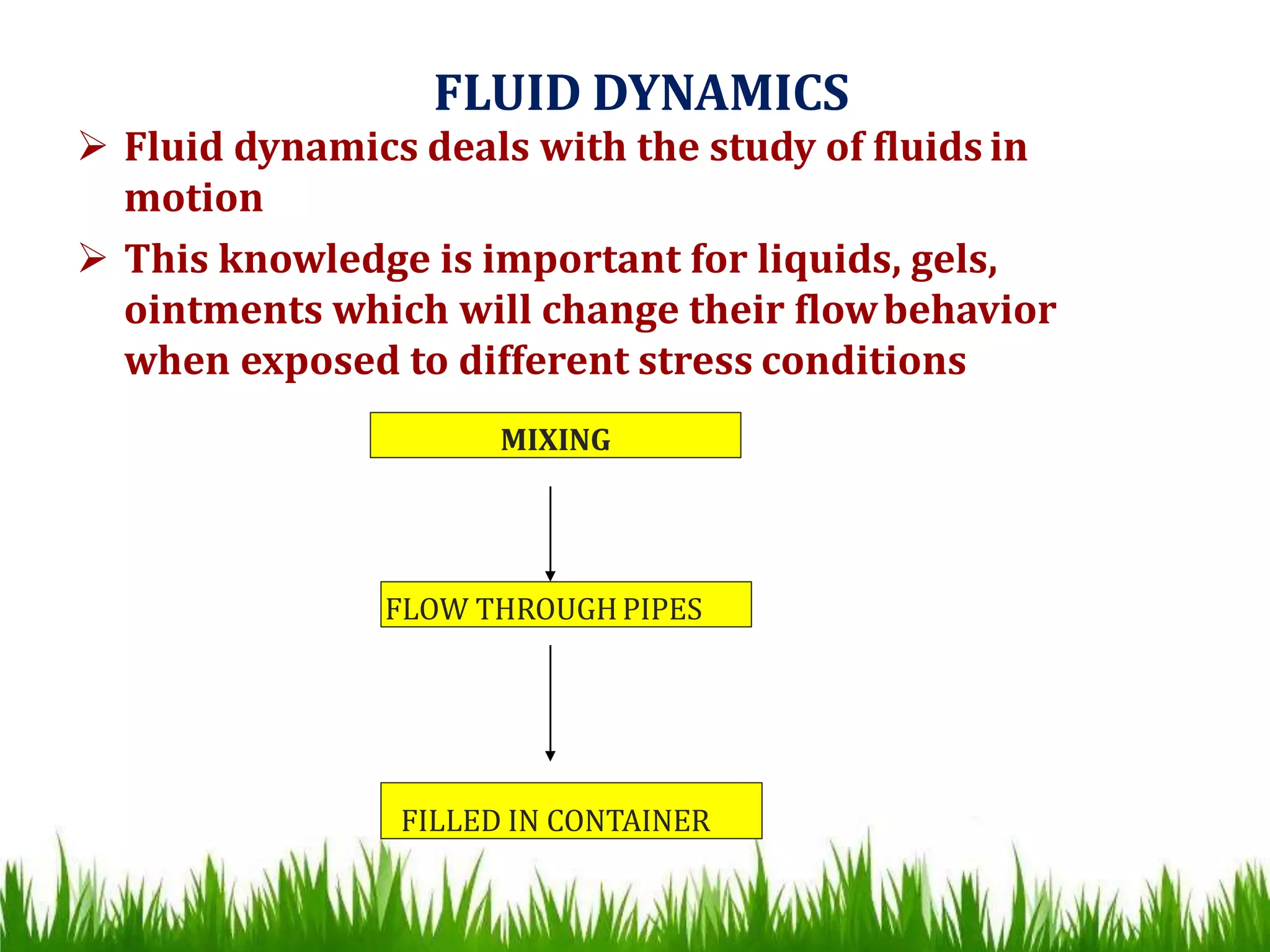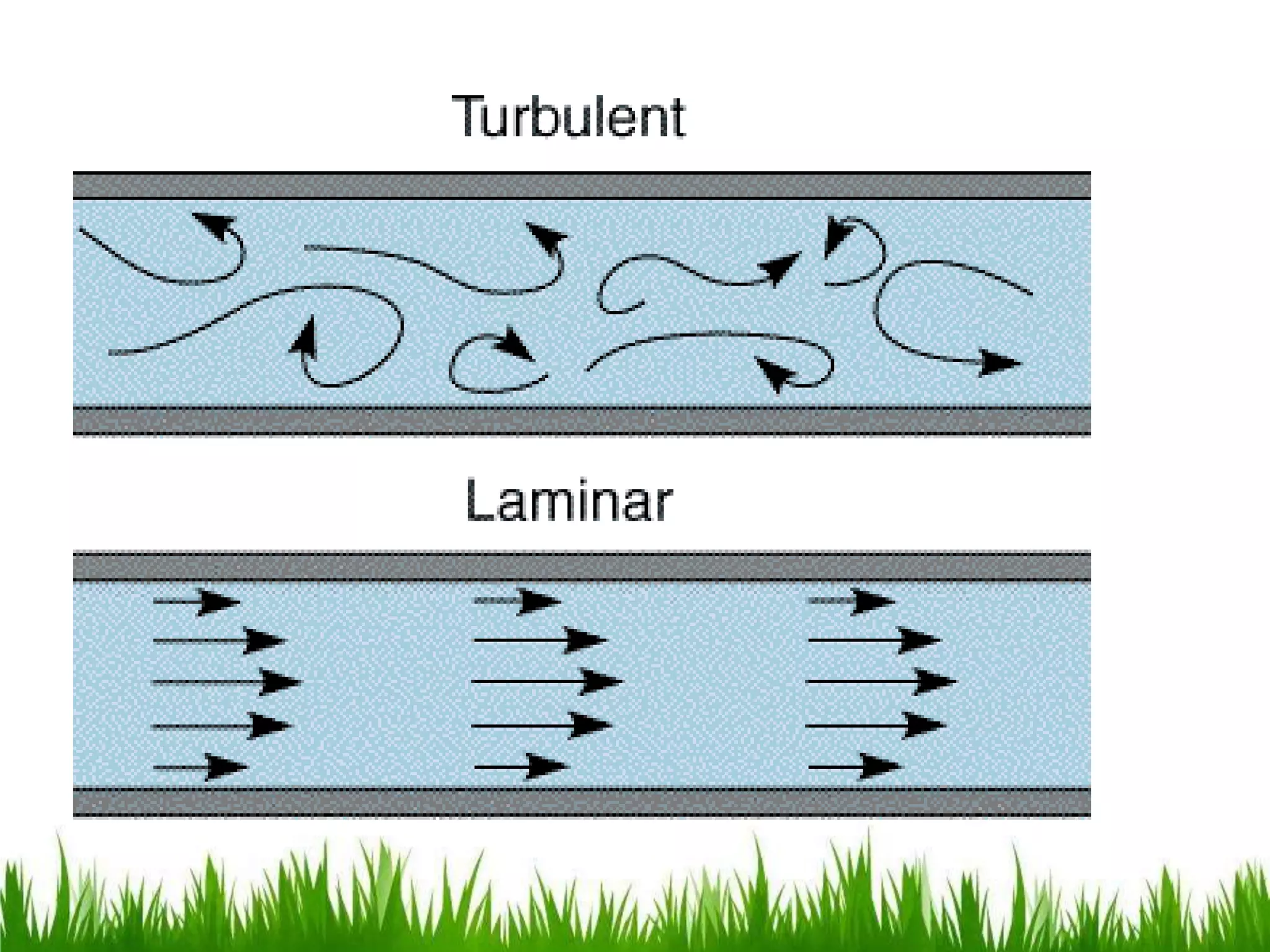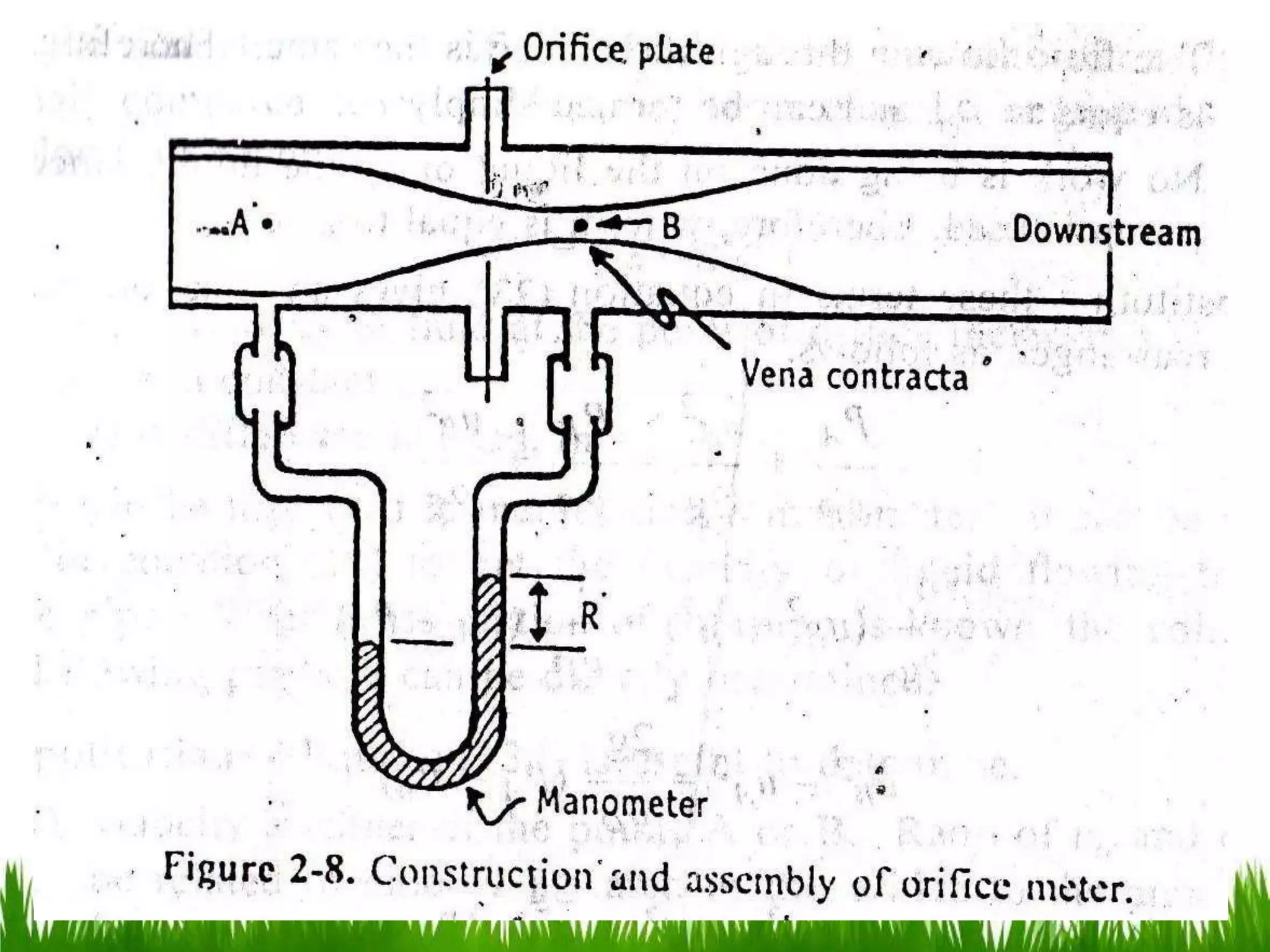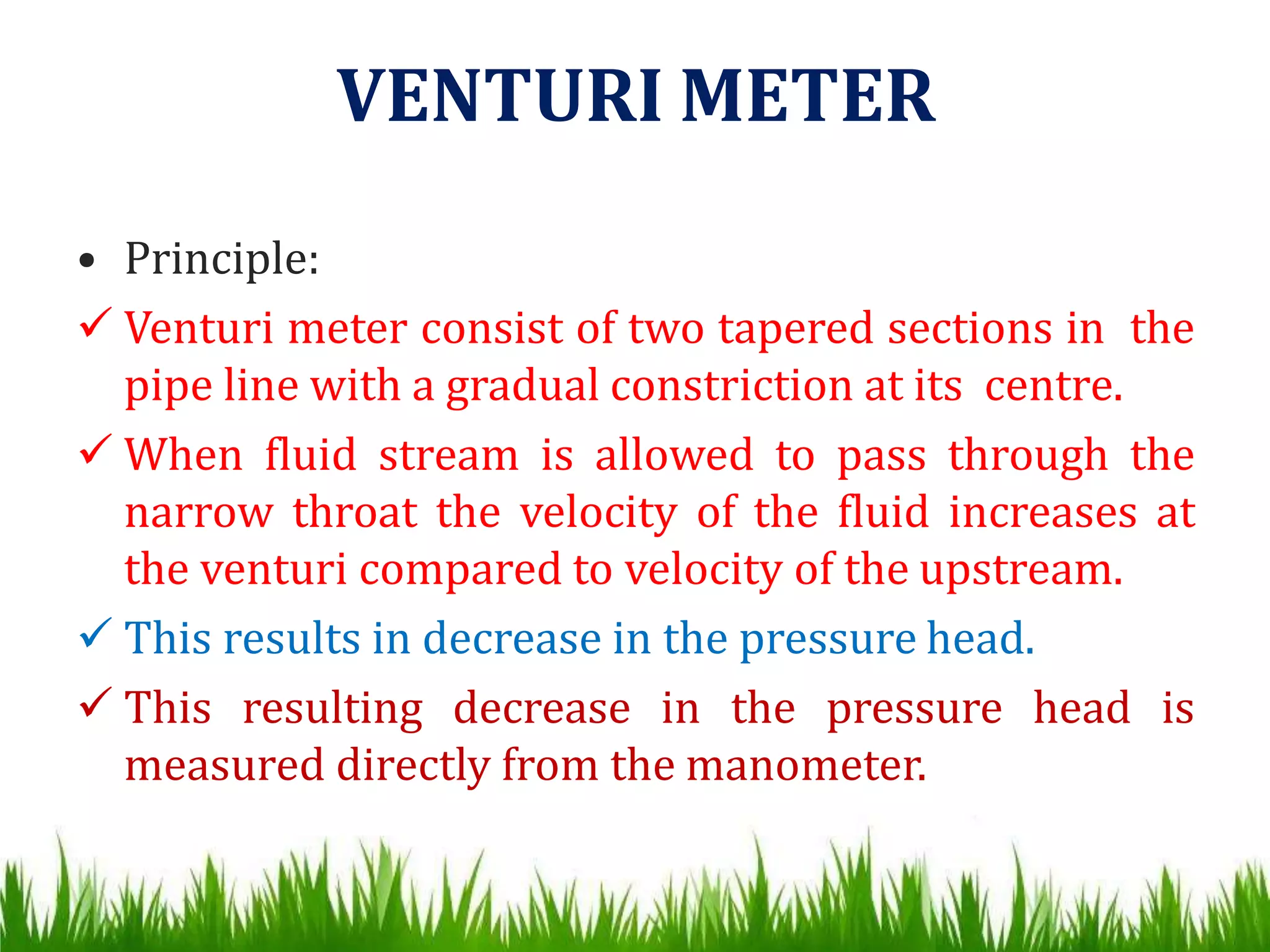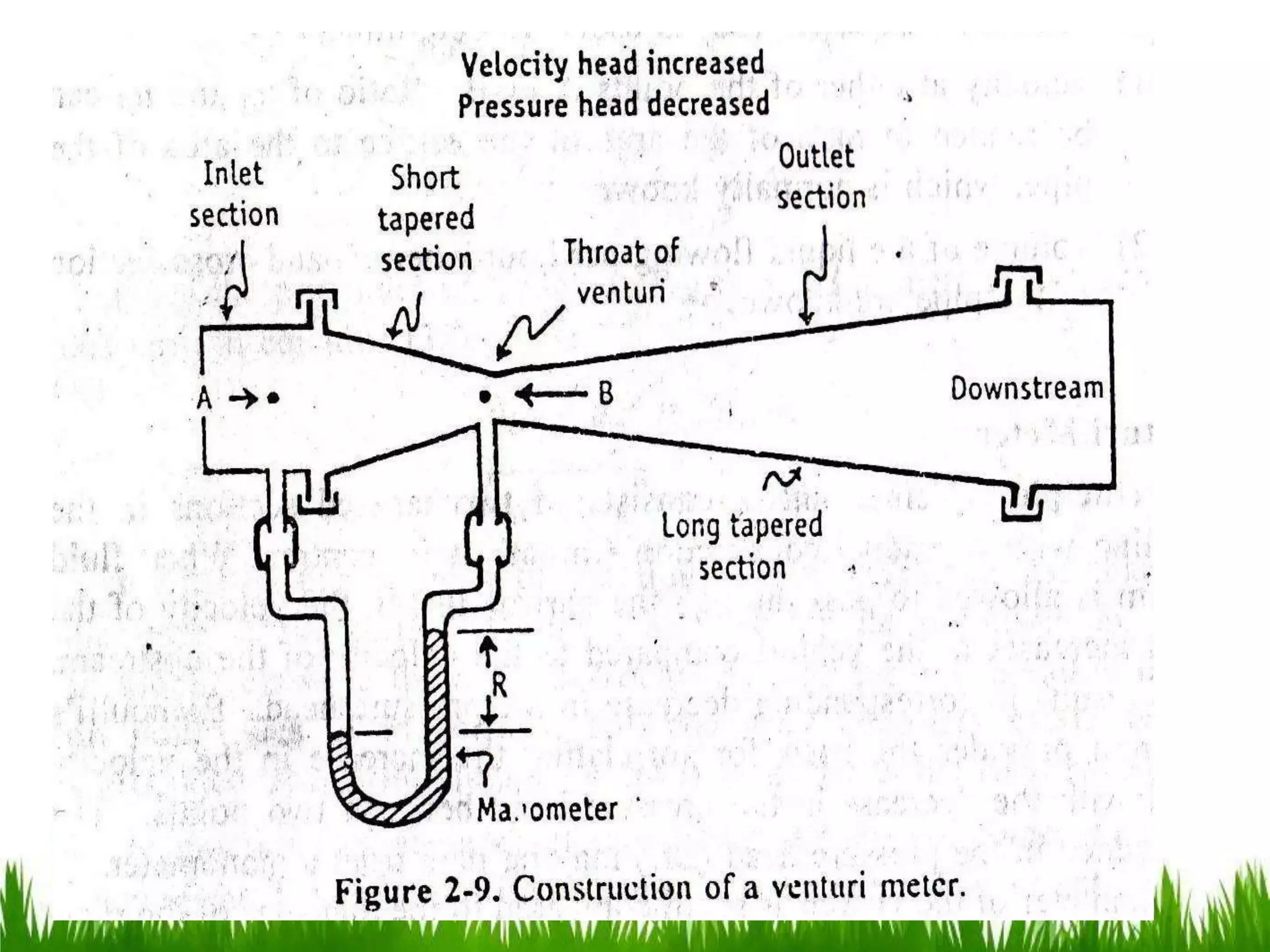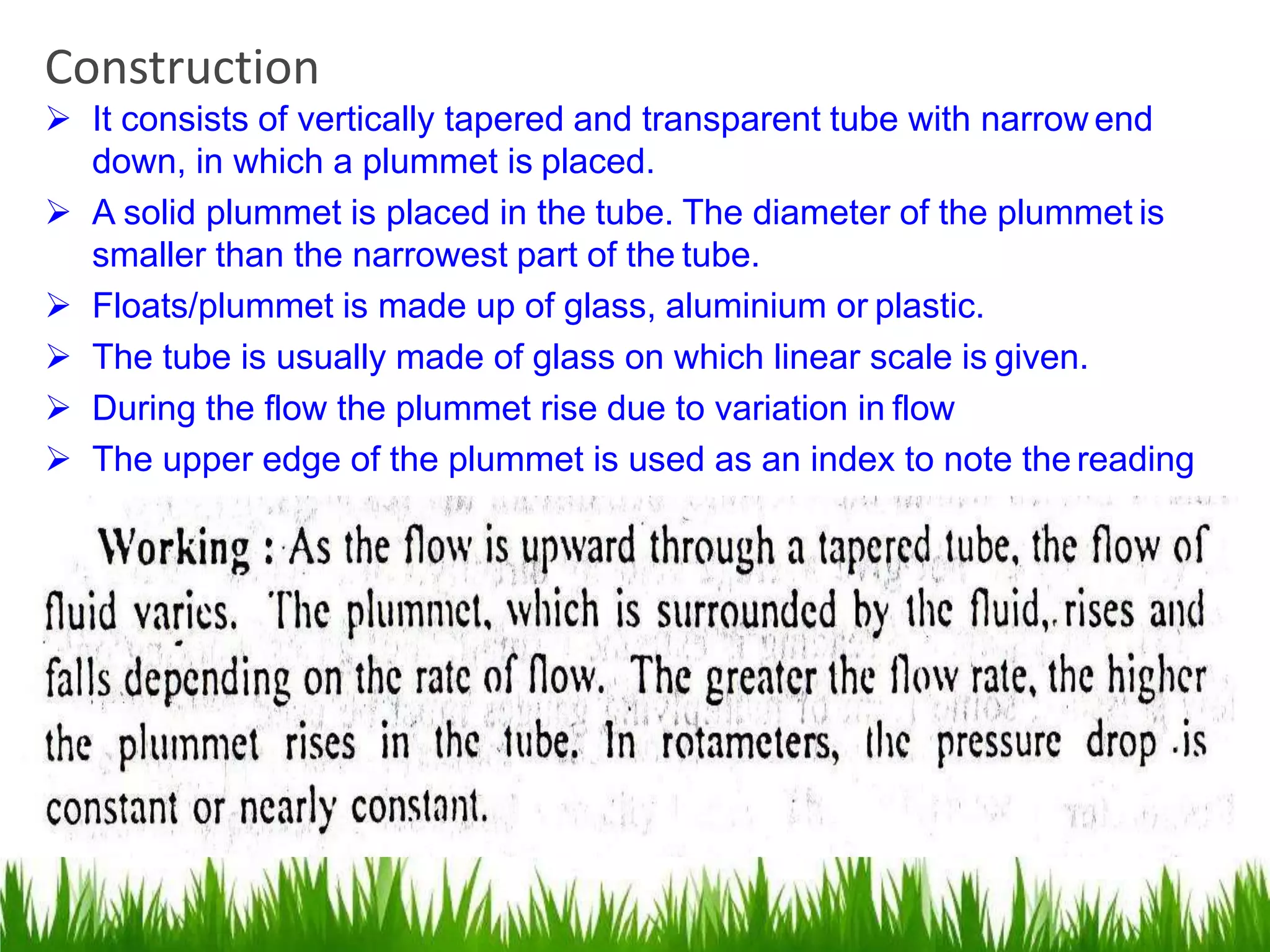1. Fluid flow can be divided into fluid statics, which deals with fluids at rest, and fluid dynamics, which deals with fluids in motion.
2. Bernoulli's theorem states that the total energy in a fluid system remains constant, meaning the sum of pressure, potential, and kinetic energy at one point equals the sum at another point.
3. Factors like pipe diameter, fluid velocity and properties, and length affect pressure losses in pipes from friction. Reynolds number is used to characterize different flow regimes like laminar or turbulent flow.

